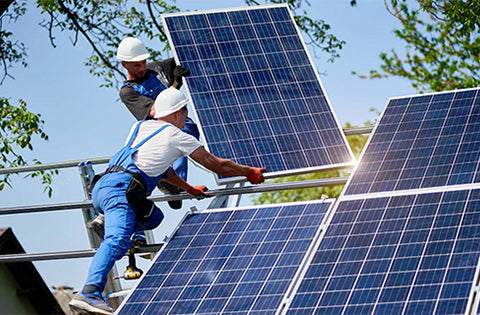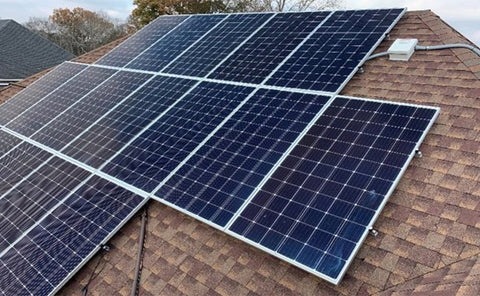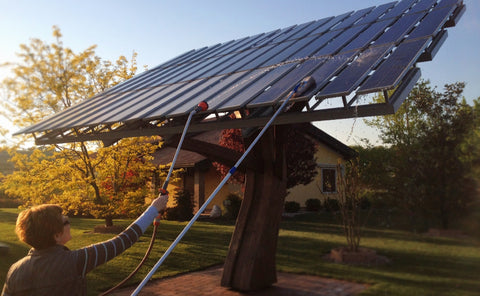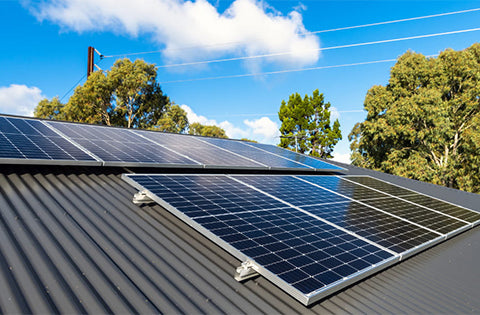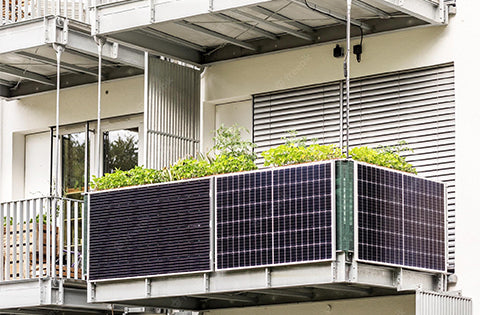As solar power has rapidly advanced in recent decades, it’s become one of the most popular off-grid or renewable energy choices. After all, it’s relatively affordable, usable in most locations, and environmentally friendly. But like every other crucial home or RV system, maintenance is part of keeping your solar panel system operating in tip-top shape. So we’re shining a light on this sometimes-ignored process by looking at everything you need to know about solar panel maintenance.
Do solar panel need regular maintenance?
The good news is that solar panel maintenance is minimal under most normal circumstances. That’s especially true compared to other off-grid and renewable energy systems like wind turbines, hydropower, and various types of generators. Solar is about as “set it and forget it” as it gets for home systems. Still, there are some things you can do regularly to ensure they continue to work as flawlessly as possible for years to come.
Maintenance items for solar panels
So what kind of solar panel maintenance should you do if you want to preserve the valuable off-grid power investment you’ve made? Here are some of the most common checklist items.
Clean your solar panels
Like everything else outside, solar panels tend to acquire dirt or dust, no matter where you install them. This grime reduces the amount of sunlight reaching the solar cells, lowering the panels’ efficiency. This means that, even under optimal sun conditions, you’ll still produce less energy than expected.
Every six months to a year, owners should clean the panels with a sponge and gentle soapy water, taking care to avoid scratching the surface. In wetter climates, rain may help clean your panels, allowing you to wait longer between cleanings. Those in dustier or drier locales will likely need more frequent cleanings. Using car wax or similar materials on solar panels is generally not recommended, as it could leave a film that decreases the panels’ efficiency.
Remove snow
For most solar users, snow removal from your panels won’t be a terribly big issue. In many cases, owners can simply clear the snow by waiting and letting it melt, blow away, or slide off. However, those in climates that see extensive amounts of snow (or who can’t afford to go without generating power) may need to take action. Heavy snow sitting on panels for extended periods can do permanent damage.
Various specialized tools help rake, peel, or push off the snow without damaging the surface of the panels. If there’s no risk of a refreeze, some also suggest using a small amount of water from a hose. This can help loosen the grip of the snow and encourage it to slide off.
Check for leaks around mounts
Whether it’s the roof of an RV or the top of a traditional home, one of the most significant potential risks with mounting panels is the danger of water infiltration. This can cause extensive, costly damage, especially if the leak isn’t discovered quickly. With this in mind, part of your solar panel maintenance should be checking for potential water leaks where your panels are mounted to your roof. Naturally, you should do this more frequently in wetter climates, where the potential for frequent rain to get inside may be more of an issue.
Check for mount corrosion
Corrosion is another persistent but often ignored source of damage to solar panel mounts. Busted panel mounts can cause unexpected damage to your roof or other mounting surfaces. In extreme cases, corrosion could even cause the panel to detach and fall off, a serious danger to the panel and anyone below! The good news is that most solar users will likely experience minimal corrosion, but those along the coast or in other salty environments should be on guard for this issue.
Inspect fro panel or wiring damage after storms
Solar panels can weather most storms with no trouble. But severe weather like hurricanes or tornadoes, as well as thunderstorms with hail, can potentially result in significant damage. Strong winds can damage panels or wiring directly or by propelling objects into them.
In addition, hail has the potential to cause severe damage. A visual inspection will reveal any cracks or other damage to the glass of the panels, mounts, or wiring. You may also realize you’ve suffered damage if your power generation is lower.
Monitor performance output
It should be fairly obvious why this is such an essential step of solar panel maintenance. Without the output and performance you expect, you’ll run short on power. This might just be an inconvenience for some, but for those who live off-grid and rely entirely on solar energy, it can be a serious issue. Owners should check out the voltage and wattage the panels produce with a multimeter. This device can take various measurements when connected to your solar system. You may also be able to use your solar system’s charge controller to monitor these levels.
Is solar panel maintenance easy to do yourself?
In most cases, solar panel maintenance is well within the skills of home or RV owners. While you need some basic electrical knowledge to measure output and conduct other basic testing, much of solar panel maintenance is simply visual inspections. However, it’s best to leave most repairs to professionals who can solve problems in the long term. Still, you shouldn’t be too concerned. Most solar power users only experience minimal problems over the time they own the system. Instead, they enjoy years of clean, green power from the sun’s rays.
Solar maintenance is important to keep your panel stable output, keep following with SOLARPARTS to get more information.
Twitter: Solarparts Instagram: Solarparts
Tumblr: Solarparts Pinterest: Solarparts
Facebook: Shenzhen Solarparts Inc
Email address: Philip@isolarparts.com
Homepage: www.isolarparts.com
